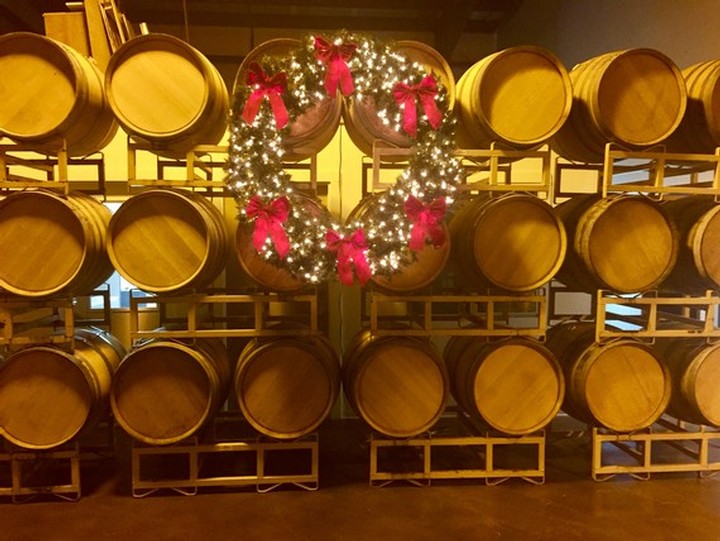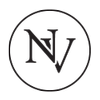News
Here you will find news, lifestyle and entertaining tips, winemaking ideas, recipes, wine pairings, and adventurous behind-the-scenes stories:
Looking back at 2017...Did Someone Say "FIRE!"

Sonoma County is without question one of the most beautiful places in the world. Bound on the west coast by the powerful Pacific Ocean and stretching inland to the majestic mountains, we enjoy a mild, Mediterranean climate in Sonoma. Not too hot, not too cold. About eight months of dry, warm days follow the blustery winter rains. Our grape vines hunker down for the winter and, in their dormant state, are immune to the pounding rains and cooler days. The water table builds holding this precious resource in anticipation of the grape vines’ needs as they spring back to life. The growing season ensues and another incredible vintage is born. There is a reason Sonoma County is respected world-wide for our sumptuous wines.
Of course there are variations on the theme. Some summers are cooler than others, some warmer. Some dryer, some wetter. But, all-in-all, a pretty perfect place to grow wine.
But those long, dry summers don’t come without their inherent risks. While everything may be an emerald green during the winter months due to the abundance of water, the hills quickly turn golden as the rains cease and the dry, warm summer takes over. Without exaggerating, it takes about two weeks for the grassy hills to dry to a golden hue again once the rains stop. There is a reason it’s called the “Golden State!”
Wild fires are, therefore, a constant concern here. Even in normal times, without the added challenge of the last few years of serious droughts in Sonoma, the hills are laden with dry foliage and dead trees. Fire danger is always on one’s mind here and every precaution is taken avoid sparking a blaze. The simple task of mowing dry grasses can present a hazard if sparks are generated in the process.
What we really don’t need during this very dry time is wind. And certainly not prolonged 60 mph gusts of bone-dry air. Yet that is what we experienced just a month ago. As harvest was winding down, with 95% of our grapes in, Sonoma County experienced its worst wild fires in history. We all know of the horrific damage they caused.
As those fires raged, as people lost their homes and as some their lives and their pets, the world moved on. The few grapes still out there continued to ripen though many wineries simply couldn’t bring them in due to lack of power and/or water, if they even had a winery left to work with. Workers fled to safer places and wineries struggled to finish up harvest. While it seems trivial in respect to the lives and property loses we experienced, winemakers had to be concerned about “smoke taint” as the fires persisted. We were in a huge cloud of smoke in Sonoma for over a week. As the winds died down and that smoke lay over the vineyards, the threat of smoke taint expanded by the minute. A winemaker’s concern is that the smoke settling on the grapes will be absorbed into the skins of the fruit. While a smoky character might not be detectable in the grapes per sé, the threat is that during fermentation the smoke will be released from the skins into the developing wines. In miniscule quantities, compounds in the smoke can add a less than appealing character to wine. Some say that it reminds them of the stench of cigarette ash trays or the smells we associate with a burned out fire pit. Not pleasant at all.
There are measures winemakers can take to reduce the incidence of smoke taint in wine during these sorts of trying times. We learned a lot more about this during the Mendocino wild fires of 2008. “We know a thing or two because we have seen a thing or two,” that repeating theme in these blogs, is so true. I am happy to report that, at Notre Vue and Balverne, we had all our fruit in the winery prior to the horrific fires and, therefore, have no issues with smoke taint. And, fortunately, that is the case for most wineries. Two weeks early, these fires would have been devastating to the 2017 vintage.
As I type this blog it is gently raining and what a wonderful thing that is! Not only do we need the rain as per usual, but the rains will help the scorched, barren land spring back to life quickly and the golden hills will return to their characteristic emerald green. So we cheer on the rains, we pray for our family and friends with horrendous loses due to the fires and hope that good things will come. And remember, a holiday celebration without a glass or two of Notre Vue or Balverne wine, well, that’s just another scary thought!
Wishing you all a happy, healthy, and safe New Years!
Barrel Tasting at our Winter Wonderland Holiday Party and the "Art of Blending"

Season’s Greetings to all! For those of you that joined us for our recent Holiday Party, it was great to see you all. Those of you that missed it, hang tight, there will be plenty more excitement coming in 2018 and we all look forward to seeing you then!
Harvest 2017 is in the house. All grapes are in, all fermentations complete (almost!) and most malo-lactic work is done. We’re busy racking the new wines off the gross lees, adjusting acidities as necessary and returning the young wines to clean barrels for aging.
Rarely is a wine bottled without some sort of blending taking place beforehand. Even the Sauvignon Blanc is a blend of two stainless steel fermented tank lots and a bit of barrel-fermented wine. The Rosé, too, is a blend of two different lots. But this is pretty much straight-forward blending. You want to use all the components so you do a trial blend and, if it tastes good, then off you go!
Blending the Notre Vue wines in particular, then the Balverne Cabernet and Pinot Noir wines, entails quite a bit more “art.” Let me walk you through my current thoughts regarding the Notre Vue Bordeaux blend.
Each month I taste through our whole inventory, lot by lot, watching the maturation process proceed and monitoring the wines for any issues that might need addressing immediately. Concurrently I am always thinking about the final blend and what might work best to create that wine. Does it look like Cabernet Sauvignon will continue to be the base of the blend? And, if so, what lot(s) will be selected for that purpose and in roughly what amounts? Or maybe Malbec is particularly strong. Might it be strong enough to be the base upon which I build the final blend? If so, that Malbec better be concentrated, balanced and loaded with fruit and strong tannins.
Winemaker Michael Westrick blending wines right from the barrel at our Winter Wonderland Holiday Party.
As those of you who barrel-tasted with us recently noted, it looks like Cabernet Sauvignon will again frame the blend for 2016. And that is by no means surprising even though the Malbec is superb! Cabernet is referred to a the “King of Grapes” for a reason. Our 2016 is powerfully concentrated, packed with dark berry fruit and graced with elegant tannins. And so I will start with Cabernet Sauvignon from Block 37 as the base. But how much? What percent of the final blend? And what will I add to that base? In what quantities?
As you might have gathered from above and from your tastings here, Malbec will certainly play a huge role in the 2016 blend. It is particularly lush and loaded with spicy, aromatic black fruit. Petit Verdot is commonly used in Bordeaux-styled blends to add structure and inky-dark color. Our 2016 Petit Verdot fits the bill perfectly and so will also play an integral part in the blend. Merlot? Cabernet Franc? How much new oak? What coopers will be included?
What does this all mean? And how will you actually “know?” The answer to those questions lies in the blending process. This is where art takes over from the science, where years of experience pays huge dividends. I will sit down in a room by myself, with samples of the components available, and literally start tasting trial blends of “some of this with a bit of that.” This is exactly like building a spaghetti sauce, starting with ground beef, adding tomato sauce, throwing in onion and garlic, adding basil or maybe oregano, fine-tuning with rosemary and thyme, and finally completing the sauce with a bit or salt and/or lemon juice. Exactly the same process in blending a wine but it takes much more time. After tasting a series of trial blends, I will then set up a series of new blends to taste, trying to hone in on that one blend that always surfaces as the best in each flight of trials. When that starts happening, I’m done!
Or am I? The next step is to take a sample or two home and taste the trial blends with food. Debbie will taste them with me, too, and offer thoughts. Does the blend work? Is it balanced? Does the tannin need adjusting? Are the aromatics attractive? Is the fruit strong and defined? And, the final question, does it taste good? Simple final question but not always easy to answer.
And so it goes. It may go quickly with the final blend appearing quite early in the process. In tougher vintages the trial blending may go on for weeks. Ultimately, one way or another, one blend will stand out as being the best. When that day arrives, when that best blend surfaces, we will physically assemble the parts in a big tank and “make the blend.” And that is a bit of a stressful day for a winemaker as there is no turning back once the blend is made.
I hope that gives you a bit of an idea of what the blending process entails. In 2018 we are hoping to offer a “Blending Seminar” here at the winery. This is something you do not want to miss as you’ll have a chance to work with five different wines and to come up with your own unique blend. We’ll then taste your blend against those of the other guests.
Will you be the next “Top Winemaker ?”
